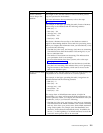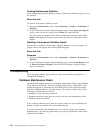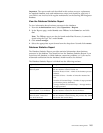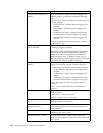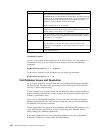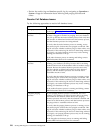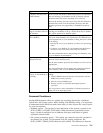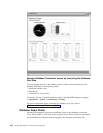Symptoms and Causes of a Full Database
The symptoms of a full database may include:
v Database does not accept new data.
v Database Usage Report shows that your database usage is increasing to capacity.
v Sterling B2B Integrator interface is slow.
v Business process execution times are slow.
Determining the cause of a full or filling database requires you to review your
business processes and your archival and purging practices. Causes of a full or
filling database may include:
v The database is not sized properly. Determine if the current database size
exceeds the expected size determined with your IBM Sales Representative at the
time of sales. (Customers must have this information in the form of a sizing
sheet.)
v Persistence levels set to high globally in your business processes or for each
activity in a business process, causing too much data to be persisted to the
database.
v Indexing business process is not working properly, causing no data to be flagged
for archival or purging and no data being removed from the database. The
indexing business process runs every 10 minutes.
v Backup business process is not working properly, causing no data to be removed
from the database and archived to another location. The archive business process
checks for the archive flag and then the date on which the archive is to be
completed. When the archive date is reached, the archive business process
archives the record.
v Purging business process is not working properly, causing no data to be purged
from the database. The purge business process checks for the purge flag and
then the date on which the purge is to be completed. When the purge date is
reached, the purge business process purges the record from the database.
v Large or old files that can be archived elsewhere are being stored in the
database, causing the database to fill up.
v Size of the database is not optimized for your processing requirements, causing
the database to fill up prematurely.
v Data retention period is set too high, causing data to be kept in the database
longer than necessary.
v Schedule_BPRecovery business process is either not running or failing, causing
business processes to remain in the database in an interrupted state.
v IndexBusinessProcess business process is either not running or failing, causing
no business processes to be flagged for archival or purging.
v AssociateDocsToBP business process is either not running or failing, causing
expired documents to not be associated for being purged from the system.
To determine the cause of a full database:
v Monitor the Database Usage Report in Sterling B2B Integrator to determine the
levels of database usage. If the usage level increases to the high end of its
capacity, you may need to take corrective action, unless you have your database
set to auto extend (increase in capacity when a specified level is reached). For
more information about auto-extending your database, refer to the
documentation pertaining to your database.
Performance Management 219



